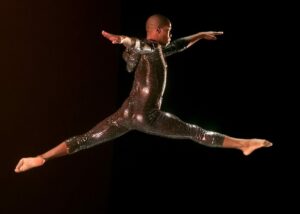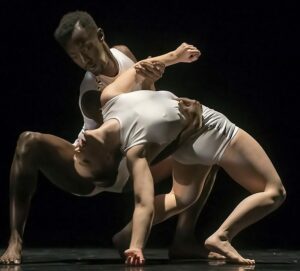Performance art is a vibrant, live art form that challenges traditional boundaries and expectations.
It’s where the artist’s body becomes the canvas, and the actions performed are the brushstrokes.
We’ll explore the origins, key elements, and the impact of performance art on both the audience and the art world.
Get ready to jump into an art form that’s as provocative as it is profound.
Origins Of Performance Art
Performance art, an avant-garde movement, surfaced distinctly in the early 20th century.
It was a byproduct of several art movements including Futurism, Dadaism, and Surrealism.
These movements questioned the conventional mediums of art – offering a stage for more radical forms of expression.
Artists such as Hugo Ball and Tristan Tzara, pivotal to the Dada movement, held events at the Cabaret Voltaire that defied traditional artistic presentation.
The act became the artwork.
Artists infused their work with live action, creating a new space that merged life and art.
Here we jump into the key moments that shaped performance art:
- The Bauhaus – integrating performance with visual arts and design – The rise of Abstract Expressionism – breaking free from traditional art forms – Allan Kaprow’s happenings – blurring the line between art and life – Marina Abramović’s endurance art – testing the limits of body and mind.
These historical threads reveal a shared impulse to harness the ephemeral and the unrepeatable in artistic expression.
As filmmaking has evolved, the interplay between performance art and moving image has grown, broadening our perspective on what constitutes art.
Key Elements Of Performance Art
Performance art is an intricate, multifaceted sphere of the visual arts that often challenges traditional boundaries.
It incorporates a variety of elements that are essential for understanding its nuances and intentions.
Here, we’ll jump into the core components that define performance art as a unique and provocative form of artistic expression.
- Time – Unlike static visual arts, performance art unfolds over time, often with a beginning and an ending that exist in real-time, aligning more with the temporal nature of filmmaking.
- Space – The location of a performance art piece can be as pivotal as the act itself, encompassing both traditional settings like galleries and theaters, as well as unconventional spaces.
- Body – The artist’s body is frequently the primary medium in performance art, used to explore concepts of identity, presence, and the human condition.
- Interaction – Audience engagement can play a critical role, with some pieces being participatory or reactionary to those witnessing the event.
- Context – Every performance is influenced by its socio-political and cultural environment, often imbued with commentary or critique pertinent to its time.
Our understanding of performance art further encapsulates the integration of various art forms:
- Visual Imagery: Just as set design and cinematography are crucial in film, the visual elements in performance art, including costumes and props, contribute to the articulation of themes and messages.
- Sound: Ranging from spoken word to music and silence, the auditory aspects can heighten the emotive power of a performance, akin to a film’s soundtrack.
- Narrative: While not always linear or obvious, narratives in performance art add a layer of storytelling that invites interpretation and contemplation.
Artists like Marina Abramović push the envelope with pieces such as The Artist Is Present, which employ these key elements in profound ways.
The interaction and duration of her performance, combined with the stark simplicity of the museum gallery space, allowed for an intense, introspective experience that wouldn’t be as impactful in any other medium.

Offering insights into humanity and the art itself, performance art remains a potent form of contemporary cultural discourse.
Impact Of Performance Art
Understanding the impact of performance art is essential to appreciating its value in the broader scope of cultural discourse.

It’s not merely about the spectacle or the immediacy of the experience but about the lasting ripples it creates across various domains.
- Cultural Reflection and Critique – Performance art often acts as a mirror to society, reflecting cultural norms and challenging them. Works like The Artist is Present by Marina Abramović highlight the intense personal engagement and the societal thirst for authentic connection. – These performances can serve as powerful critiques of political systems, social structures, and gender norms, deeply affecting audiences and spurring conversations.
Performance art has unequivocally influenced the filmmaking world.
The visual language of performance art – with its raw, unscripted moments – has found its way into the cinematic arena, pushing filmmakers to explore new narrative techniques and modes of storytelling.
- Innovative Storytelling in Film – The use of long takes and a focus on the physical presence of characters in movies such as Birdman echoes the influence of performance art. – Film directors have embraced the unpredictable nature of live performance, weaving it into scripted narratives to create films that are both thought-provoking and visually stunning.
Performance art’s emphasis on time, space, and body has not only inspired individual creators but has permeated into the fabric of contemporary culture, altering our perceptions of art and its role in society.
Through its integration of various art forms and its often interactive nature, performance art has paved the way for new artistic expressions that resonate with audiences on a profound level.
What Is Performance Art – Wrap Up
We’ve journeyed through the dynamic realm of performance art, recognizing its profound ability to meld various artistic disciplines and challenge our understanding of art’s role in society.
By spotlighting artists like Marina Abramović, we’ve seen how the limits of expression are continually being redefined.
Performance art doesn’t just exist in a vacuum; it reflects and critiques our cultural narratives, influencing other creative sectors, including film.
As we move forward, let’s carry with us the appreciation for the immersive and transformative experiences that performance art provides, acknowledging its lasting impact on contemporary culture.
Frequently Asked Questions
What Are The Key Elements Of Performance Art?
Performance art is built on the elements of time, space, body, interaction, and context, each contributing to the overall experience and meaning of the work.
How Does Performance Art Integrate Other Art Forms?
Performance art often incorporates visual imagery, sound, narrative, and other art forms to create a multi-faceted expression that engages various senses.
Who Is Marina Abramović And What Is Her Significance In Performance Art?
Marina Abramović is a renowned performance artist known for her boundary-pushing works that often involve the public and challenge perceptions of art and endurance.
What Role Does Performance Art Play In Cultural Reflection?
Performance art acts as a mirror to society, reflecting cultural norms, challenging prejudices, and sparking discussion about societal issues.
How Has Performance Art Influenced Storytelling In Film?
Performance art has influenced film by inspiring innovative storytelling techniques, focusing on the experiential aspect, and emphasizing the use of time, space, and body.
In What Ways Has Performance Art Altered Contemporary Culture?
Performance art has altered contemporary culture by changing how we perceive and interact with art, as well as influencing other creative mediums and the way they are consumed.


